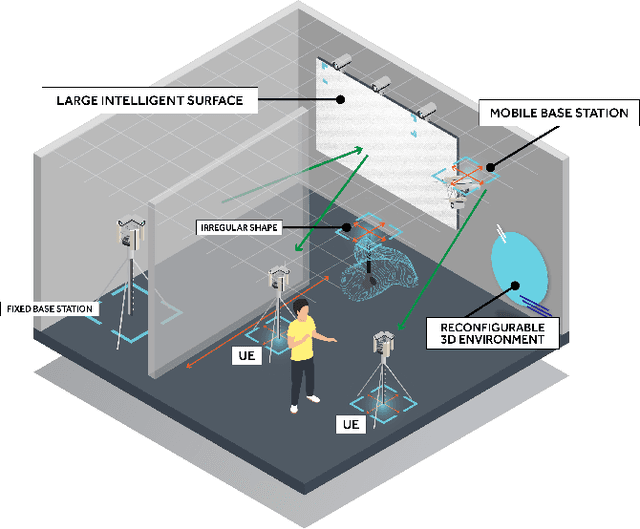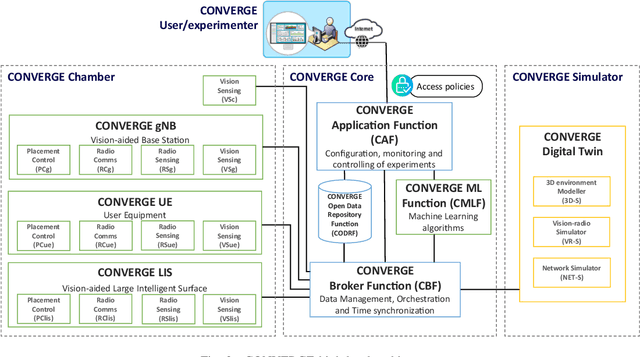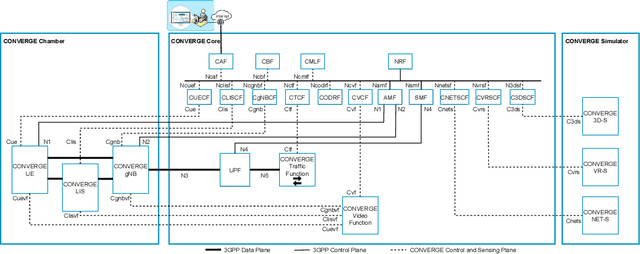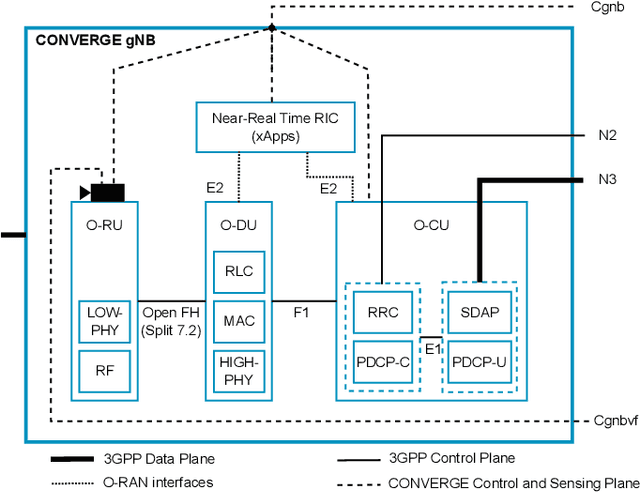Luis M. Pessoa
CONVERGE: A Multi-Agent Vision-Radio Architecture for xApps
Aug 06, 2025Abstract:Telecommunications and computer vision have evolved independently. With the emergence of high-frequency wireless links operating mostly in line-of-sight, visual data can help predict the channel dynamics by detecting obstacles and help overcoming them through beamforming or handover techniques. This paper proposes a novel architecture for delivering real-time radio and video sensing information to O-RAN xApps through a multi-agent approach, and introduces a new video function capable of generating blockage information for xApps, enabling Integrated Sensing and Communications. Experimental results show that the delay of sensing information remains under 1\,ms and that an xApp can successfully use radio and video sensing information to control the 5G/6G RAN in real-time.
Use Cases for Terahertz Communications: An Industrial Perspective
Jan 07, 2025



Abstract:Thanks to the vast amount of available resources and unique propagation properties, terahertz (THz) frequency bands are viewed as a key enabler for achieving ultrahigh communication performance and precise sensing capabilities in future wireless systems. Recently, the European Telecommunications Standards Institute (ETSI) initiated an Industry Specification Group (ISG) on THz which aims at establishing the technical foundation for subsequent standardization of this technology, which is pivotal for its successful integration into future networks. Starting from the work recently finalized within this group, this paper provides an industrial perspective on potential use cases and frequency bands of interest for THz communication systems. We first identify promising frequency bands in the 100 GHz - 1 THz range, offering over 500 GHz of available spectrum that can be exploited to unlock the full potential of THz communications. Then, we present key use cases and application areas for THz communications, emphasizing the role of this technology and its advantages over other frequency bands. We discuss their target requirements and show that some applications demand for multi-Tbps data rates, latency below 0.5 ms, and sensing accuracy down to 0.5 cm. Additionally, we identify the main deployment scenarios and outline other enabling technologies crucial for overcoming the challenges faced by THz system. Finally, we summarize the past and ongoing standardization efforts focusing on THz communications, while also providing an outlook towards the inclusion of this technology as an integral part of the future sixth generation (6G) and beyond communication networks.
Vision-Radio Experimental Infrastructure Architecture Towards 6G
Feb 29, 2024



Abstract:Telecommunications and computer vision have evolved separately so far. Yet, with the shift to sub-terahertz (sub-THz) and terahertz (THz) radio communications, there is an opportunity to explore computer vision technologies together with radio communications, considering the dependency of both technologies on Line of Sight. The combination of radio sensing and computer vision can address challenges such as obstructions and poor lighting. Also, machine learning algorithms, capable of processing multimodal data, play a crucial role in deriving insights from raw and low-level sensing data, offering a new level of abstraction that can enhance various applications and use cases such as beamforming and terminal handovers. This paper introduces CONVERGE, a pioneering vision-radio paradigm that bridges this gap by leveraging Integrated Sensing and Communication (ISAC) to facilitate a dual "View-to-Communicate, Communicate-to-View" approach. CONVERGE offers tools that merge wireless communications and computer vision, establishing a novel Research Infrastructure (RI) that will be open to the scientific community and capable of providing open datasets. This new infrastructure will support future research in 6G and beyond concerning multiple verticals, such as telecommunications, automotive, manufacturing, media, and health.
 Add to Chrome
Add to Chrome Add to Firefox
Add to Firefox Add to Edge
Add to Edge